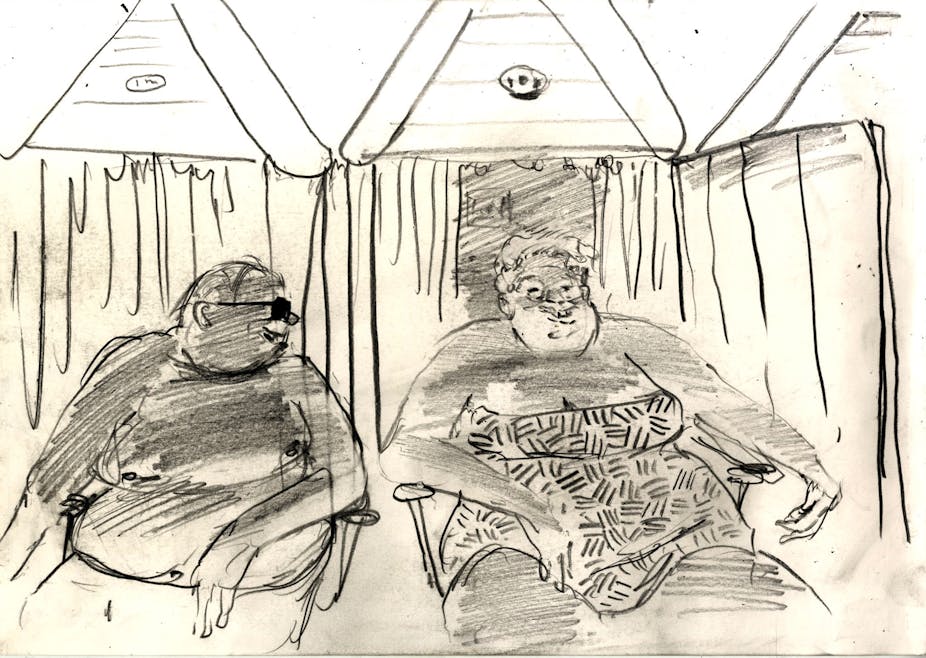Unfurling along the sandy border between town and beach, the English seaside is a place of contradictions – rich and poor, old and new, fun and desperate. Although many of us have a sugary vision of coastal England as tacky entertainment and a bygone refuge from working life, the reality is that many seaside towns are on the front line of contemporary social, economic and political challenges.
Indeed, despite the recent boost to British seaside resorts provided by pandemic-related travel restrictions, since the 1970s there has been a steady decline in the number of people heading to England’s beaches for their holidays – instead favouring cheap deals overseas.
Austerity policies have also hit a lot of coastal towns hard. And many seaside resorts often have a low life expectancy and high concentrations of chronic disease.
In many places, disgruntlement about such problems may have helped to fuel Brexit. Analysis of the EU referendum by Chris Hanretty, professor of politics, at Royal Holloway, University of London, shows that around 100 of the 120 or so constituencies with a coastline voted to leave. While a poll carried out just ahead of the vote by researchers at the University of Aberdeen suggested that 92% of the fishing industry would be voting to leave the EU.
And for all the increases in visitors once restrictions lifted, many seaside towns have really suffered during the pandemic – with many coastal resorts experiencing surging unemployment rates.
The coast must also contend with the grim consequences of the climate breakdown. With rising sea levels comes the increased risk of flooding and in some instances cliff erosion has led to entire buildings falling into the sea.
As a travel writer and illustrator, our recent project has involved us documenting and sketching our experiences of visiting seaside towns across England. On our visits, we’ve encountered people living without mains gas or electricity in southern Essex, post-lockdown beach parties turned violent in Bournemouth and COVID-19 conspiracy theories in Torbay and Tynemouth.

We’ve also witnessed the slow death of the high street from the north east down to Weston-super-Mare – along with the growing environmental threat of plastic pollution to the entire English coast. On a brighter note, we’ve appreciated the quirky appeal of these places with their arcade games, fish and chips, full English breakfasts, sticks of rock and endless cups of tea.
Our project has revealed that the bricks and mortar of England’s seaside towns – the retro, elaborate piers and arcades – are just one part of the picture. Party animals on the promenades, families taking selfies in the calm water and many other human stories are what the drawings aim to capture.

There’s a long history of writers and artists collaborating on travel narratives. It was common in the heyday of post-war print with illustrators such as Ben Shahn, Ronald Searle, Paul Hogarth, Linda Kitson and Robert Weaver weaving visual essays into text.
The most famous duo was US journalist Hunter S. Thompson and the British illustrator, Ralph Steadman, who matched one another’s mania in words and images. They produced searing portraits of people and places, magnifying their observations of the real world into caricatures with heightened emotion.

Some of the places we visited are poverty-stricken and marginalised. Clacton-on-Sea in Essex and Torbay in Devon, for example, were recently named in a government report as having some of the “poorest health outcomes” in England. So we wanted to ensure we were reporting on these places fairly, accurately and empathetically and not just fetishising communities as subjects of “poverty porn” – as so often can be the dominant media take.
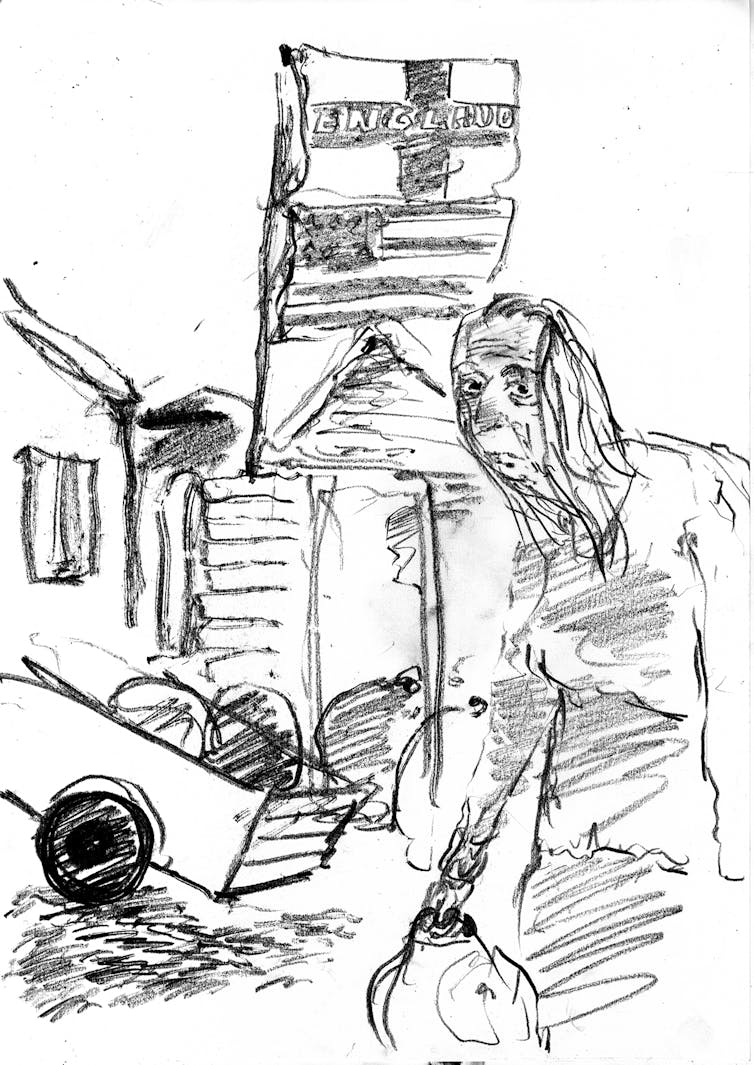
This is a common risk in travel writing, as highlighted by the US academic Mary-Louise Pratt. Indeed, there is a long and shameful tradition of relatively privileged writers and artists patronising, belittling and misunderstanding those less fortunate than themselves.
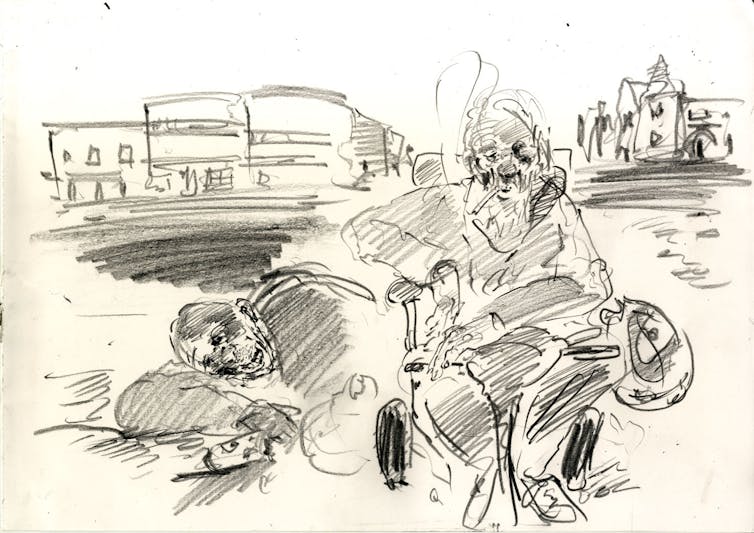
This is why it felt important for us to understand the proper social and political contexts of the areas we were visiting. In the case of Jaywick, for example, we learned that the town’s woes were related to years of public underfunding and flaws in the universal credit system. While the closure of the Butlin’s holiday camp nearby in 1983 condemned subsequent generations to irrevocable joblessness.
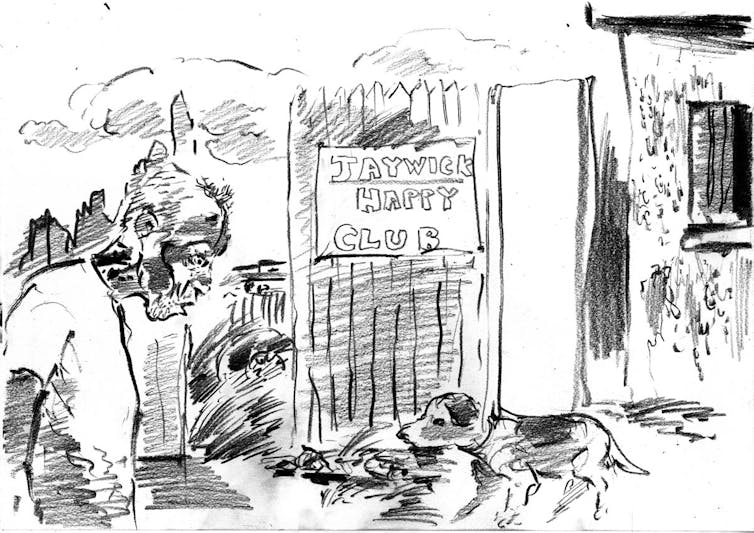
The use of illustrations also played into this ethical question about representation. Arguably, drawing occupies less fraught terrain than photography – which, as the US writer, filmmaker, philosopher and teacher, Susan Sontag, notes is “context determined”. In other words, photography as a medium can confirm and sustain power dynamics as the subject will often lack access to and control over their own representation.
Unlike a photograph though, a drawing, although capable of capturing a likeness, is inherently subjective and is a creative, impressionistic view of reality. Photography captures people in places, while drawings are about people in places.

As the Australian anthropologist Michael Taussig describes in his book, I Swear I Saw This, a drawing is an articulation of the experience of seeing and witnessing. The drawings reflect the people they depict in more than likeness. They are built line by line, mark by mark and they reflect the struggle and make-up of their subjects bit by bit.
Together we have seen how the English seaside town is many different things: a nostalgia-induced dance with the past, a leisure zone where people forget their daily drudgery, and a fortress in the firing line of ecological and social danger.
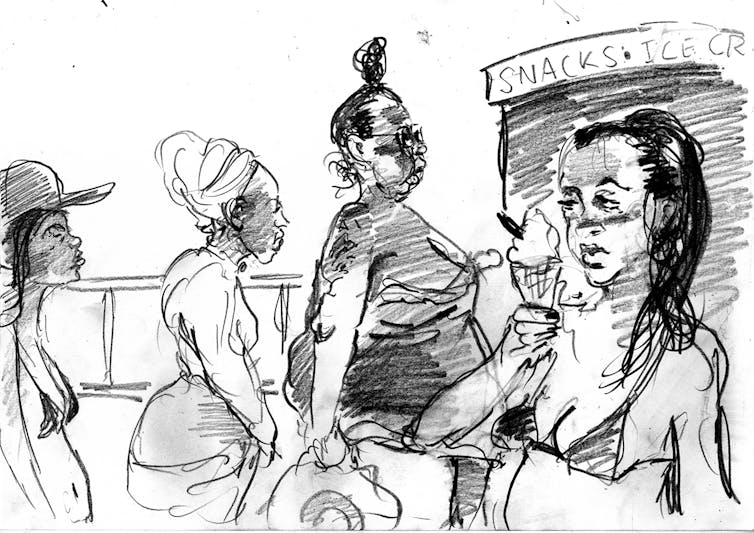
Equally varied were the people we met. These include the Essex artists, historians and community members making art to draw attention to flooding, and their counterparts on an anti-plastic pollution project in Southsea.
And then of course there were the publicans, shopkeepers and cafe and snack bar owners who told us about their struggles in the current economic climate. Here’s hoping then that their lockdown woes will be remedied by the new boom in British people spending more time at their own seaside rather than the beaches abroad.

